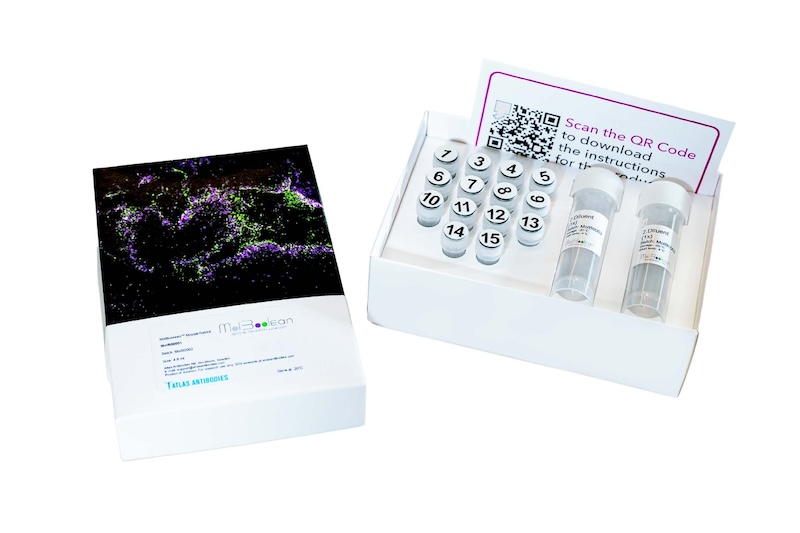Proteins and their interactions:
the MolBoolean™ revolution by Atlas Antibodies
Authors: Nancy Dekki PhD and Laura Pozzi PhD, Atlas Antibodies AB, Sweden
Atlas Antibodies, the Swedish Biotech company that emerged from the Human Protein Atlas project, is making waves in protein research with its MolBoolean™ technology. This innovative assay is designed to simultaneously measure free and interacting proteins within fixed cells and tissue samples, offering unparalleled insights into protein-protein interactions.

Photo: Mikael Malmqvist, PhD, Atlas Antibodies
Based in Stockholm and founded in 2006, Atlas Antibodies has grown its catalog to over 22,000 antibodies for research purposes. The development of MolBoolean™ marks a significant leap forward, combining the company's expertise in immunoassays with groundbreaking proximity detection technology.
Mikael Malmqvist, PhD, principal scientist at Atlas Antibodies, was interviewed about the MolBoolean™ technology by GenomeWeb, the New York based organization for online news.
"MolBoolean™ is based on the In situ Proximity Ligation Assays (PLA) technology. It is a universal kit where the researchers use their own primary antibodies for their protein targets, with Atlas Antibodies supplying the secondary antibodies conjugated to unique DNA sequences. When the secondary antibodies bind to their targets, the attached DNA strands are brought into proximity and are ligated, forming a new template that can then be amplified by rolling circle amplification. Readout of the new template is done by hybridizing fluorescence- tagged oligos. In cases where the proteins are detected separately, the rolling circle amplification will produce a different oligo sequence, allowing researchers to distinguish between levels of bound and free protein."
"The ability to measure both bound and free proteins allows researchers to normalize the number of protein-protein interactions to the total amount of target proteins in a sample. This can help prevent misinterpretation of protein interaction data in situations where, for instance an increase in interaction signal stems from higher expression of the target proteins, as opposed to increased interaction rates. " Malmqvist said.

The MolBoolean™ kit includes 15 separate tubes: enzymes (nickase, ligase, polymerase), buffers, oligos for tagging and detection, secondary antibody probes and additional reagents such as blocker, and diluent.The total volume of 4.8 ml, is sufficient for approx. 120 assays in cells (40 μl/assay) and 60 assays in tissue (80 μl/assay).
From Innovation to Application: the story behind MolBoolean™
The journey of MolBoolean™ began with Professor Ola Söderberg from Uppsala University, a key inventor of the original in situ proximity ligation assay (PLA) technology almost 20 years ago. Recognizing the potential to refine PLA for broader use, Söderberg approached Atlas Antibodies with the opportunity to patent and develop MolBoolean™ into a versatile research kit. By 2019, the company secured these rights, transforming the concept into a robust and user-friendly assay.

Photo: Prof. Ola Soderberg, visiting Forskaren, the new Atlas Antibodies' headquarter
MolBoolean™, commercially launched by Atlas Antibodies in 2023, builds on PLA by allowing researchers to use their own primary antibodies, while the kit supplies secondary antibodies (mouse/rabbit) conjugated with unique DNA sequences.
When these secondary antibodies bind to their targets, their DNA strands come into proximity, forming a template for rolling circle amplification (RCA). This amplified template generates fluorescent signals that clearly differentiate between free proteins and protein complexes. Using a standard fluorescent microscope, researchers can analyze these signals to quantify both forms, enabling more precise data on protein interactions.


